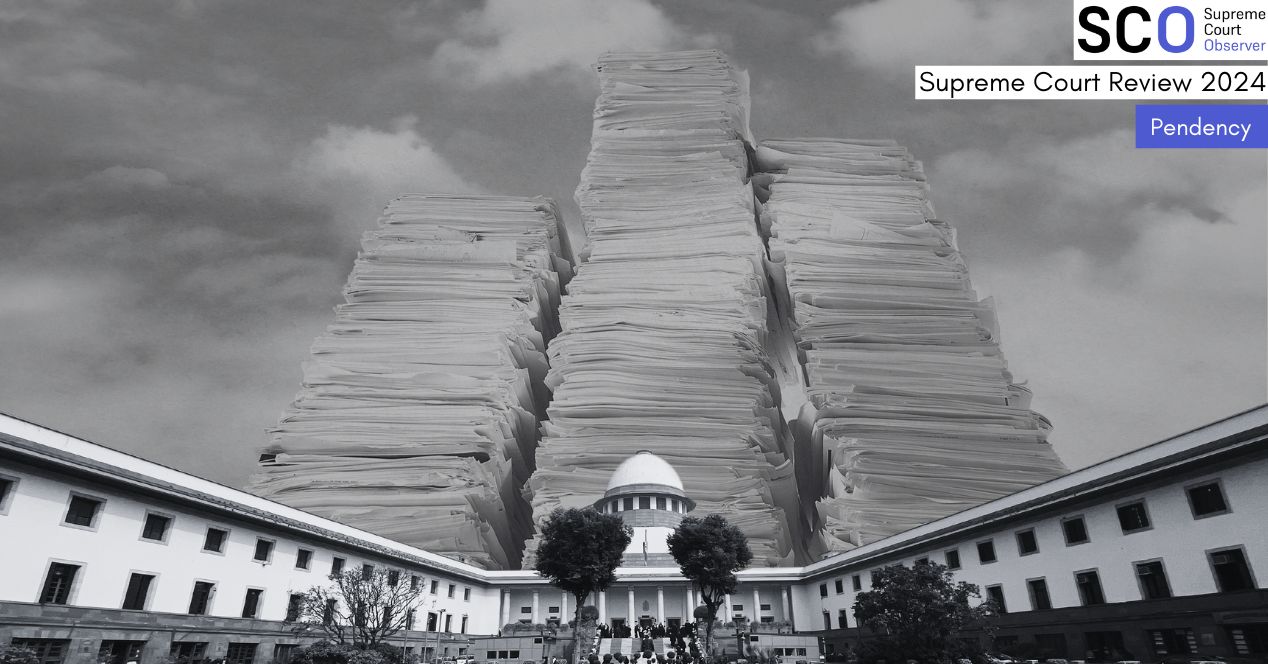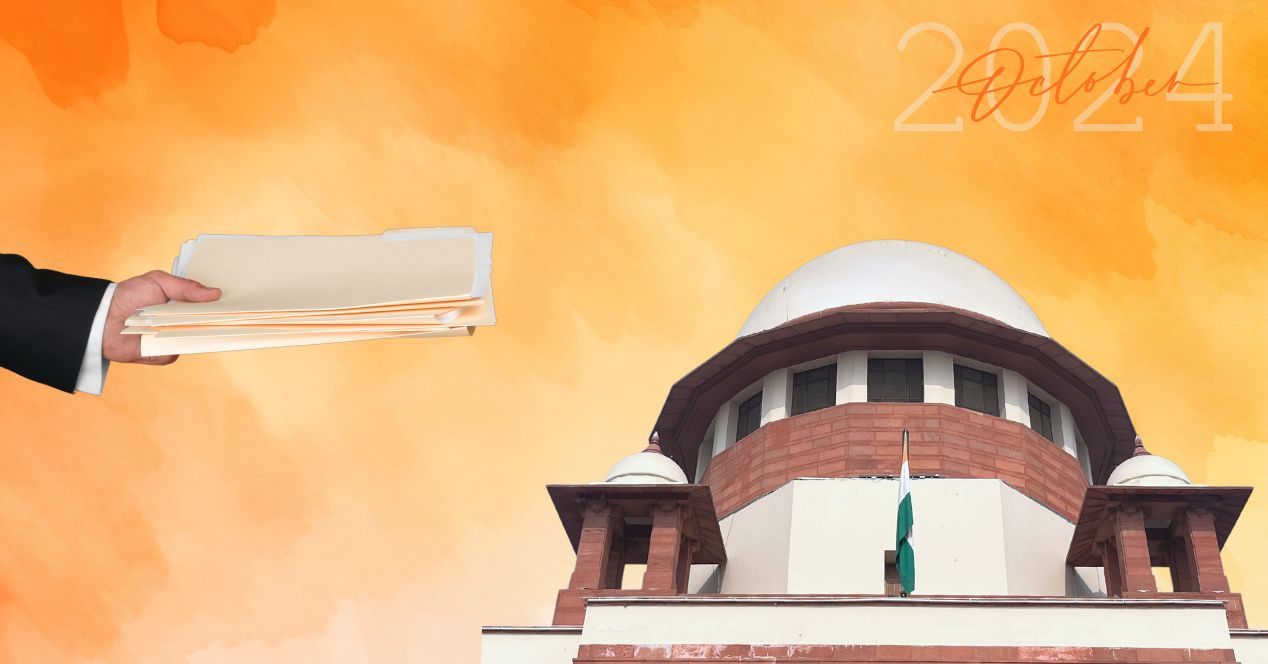Court Data
December 2024: Disposal rate drops in month of 15 working days
The Court, however, cleared more cases than it did in March 2024, when it also worked for only 15 days and with one judge more

In December 2024, more cases were instituted at the Supreme Court than disposed of, leading to a drop in the clearance rate.
Institution refers to the number of cases filed at the Court at any given point. Disposal refers to the number of cases cleared by benches of the Court either by dismissing them or by delivering the final verdict.
5259 cases instituted, 4448 disposed
Figure 1 shows a month-wise breakdown of the number of cases instituted in and disposed of by the Supreme Court from January to December 2024.
Note: The December 2024 data was collected from the National Judicial Data Grid (NJDG) on 8 January 2025 at 9:55 am.
As seen in Figure 1 above, in December, the Court received 5259 cases (80 less than in November) and disposed of 4448 cases (1123 less than in November). In December 2024, the Court worked for only 15 days owing to the Court’s annual winter vacation, which began on the 23rd of the month. This means that the Court disposed of an average of 296.5 cases per day. The monthly disposal rate stood at 84.58 percent.
Though there is a drop in disposal as compared to November, the Court disposed of 522 cases more than in March 2024, when it also worked only for 15 days due to the Holi vacation. Moreover, in March, the Court was functioning with a full bench of 34 judges (as opposed to 33 in December), though it should also be noted that nine judges were engaged in a Constitution Bench hearing for five full days. Additionally, one factor that influenced December’s comparatively higher disposal figure could be Chief Justice Sanjiv Khanna’s decision to completely pause hearing regular matters until January 2025.
The year in perspective
To gauge the Court’s performance throughout the year, here’s an assessment of the highlights of each quarter of 2024:
Spring session
In January, the Court started the year strong, disposing of 5453 cases and registering 4964 new ones. A seven-judge Constitution Bench was active for seven days. In February, despite operating at full strength, the Court disposed of 5409 cases, 44 fewer than in January and received 4821 cases. In March, for the first time in 2024, the institution exceeded disposal, with 4656 cases filed and 3926 cleared.
Summer session
In April, activity picked up, with 5613 cases filed and 4813 disposed of. In May, the Court broke for summer vacation on the 20th. During this month, the Court received 5418 cases and cleared 3610. In June, the vacation led to a significant decline in activity, with only 2643 cases instituted. Vacation Benches cleared 613 cases during this time.
Monsoon Session
In July, after the break, the Court achieved its highest monthly disposal, clearing 6198 cases. It received 5949 cases during that month. In August, the Court received 5530 cases and disposed of 5063. In September, there were 5672 institutions and 5142 disposals.
Winter Session
In October, the Court cleared 4563 cases and received 5178 new cases. In November, despite a change in Chief Justice, the Court managed to clear 5571 cases and received 5339 cases.
For a detailed analysis of the pendency figures through 2024, read our year-end review here.
Note 1: In our monthly updates on case institution and disposal at the Supreme Court, we also examine inconsistencies in data between two platforms: the National Judicial Data Grid (NJDG) and the Justice Clock. The Justice Clock, hosted on the Supreme Court’s website, provides real-time updates, while the NJDG, managed by the Department of Justice, collects data from the Supreme Court, High Courts, and subordinate courts.
We’ve noticed occasional delays in data syncing between the two platforms. For example, the numbers were consistent for February, March, August, and September. However, discrepancies arose in January, April, May, June and July. In October and November, the number on both platforms reflected only minor differences. In December, we noticed a discrepancy again. The Justice Clock displayed an institution of 5325 cases (66 more than the NJDG) and a disposal of 5087 cases (639 more than the NJDG)
Note 2: In our monthly tracking of institutions and disposal of cases, we also track the monthly trends for the last five years (2020-2024). However, we’re unable to carry out this part of the analysis for November and December since the historical data for these months is not available in the Supreme Court’s annual reports for past years. The report is typically published in October each year.
Note 3: We also noticed a slight discrepancy in the NJDG data. For our 2024 pendency review, published as part of our year-ender series, we collected data from the NJDG on 31 December 2024. At the time, the NJDG recorded an institution of 5146 cases (113 cases less than the figure in this data post) for December and a disposal of 4418 cases (30 cases less than the figure in this data post).




